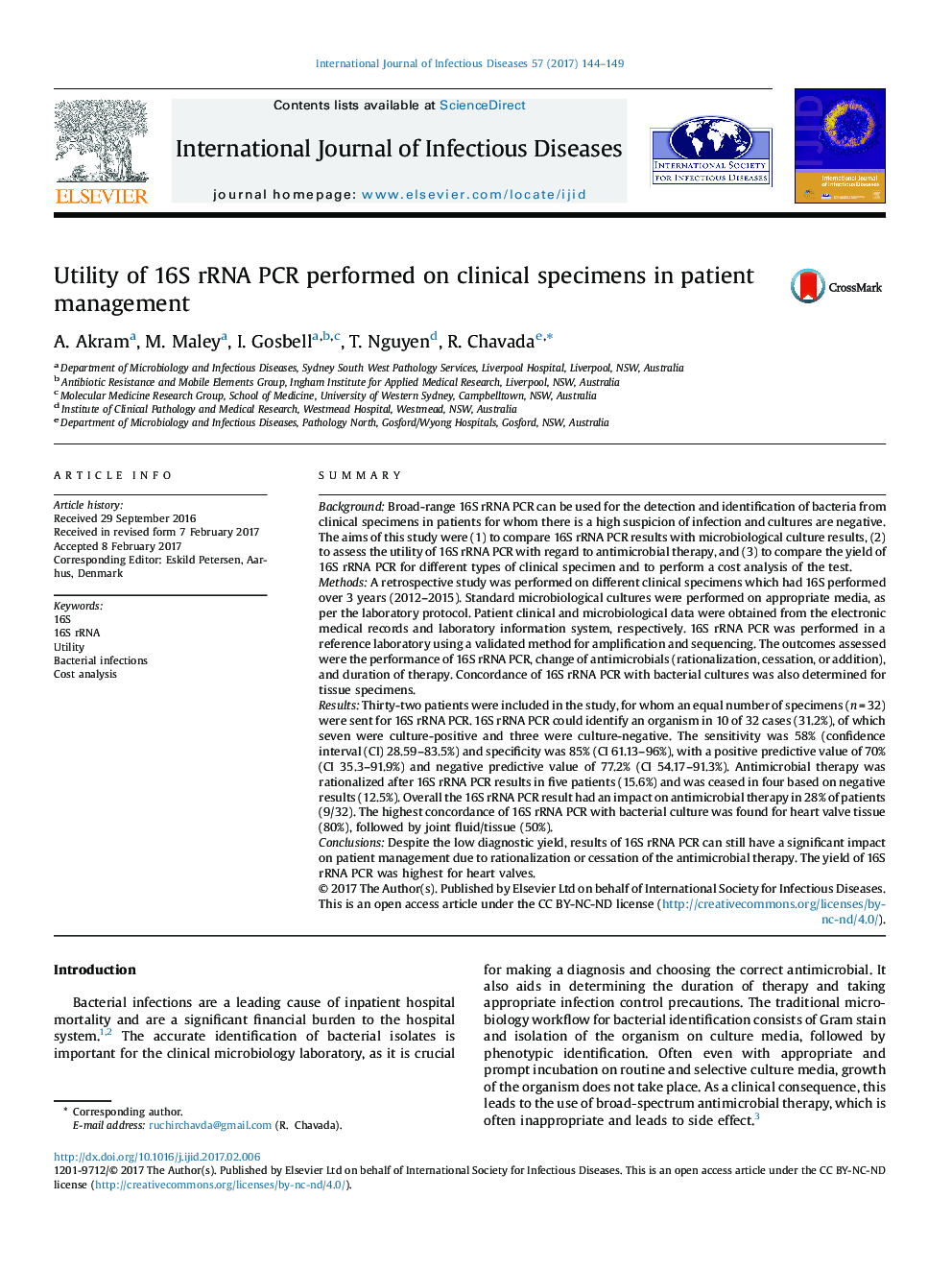| کد مقاله | کد نشریه | سال انتشار | مقاله انگلیسی | نسخه تمام متن |
|---|---|---|---|---|
| 5667323 | 1592036 | 2017 | 6 صفحه PDF | دانلود رایگان |

SummaryBackgroundBroad-range 16S rRNA PCR can be used for the detection and identification of bacteria from clinical specimens in patients for whom there is a high suspicion of infection and cultures are negative. The aims of this study were (1) to compare 16S rRNA PCR results with microbiological culture results, (2) to assess the utility of 16S rRNA PCR with regard to antimicrobial therapy, and (3) to compare the yield of 16S rRNA PCR for different types of clinical specimen and to perform a cost analysis of the test.MethodsA retrospective study was performed on different clinical specimens which had 16S performed over 3 years (2012-2015). Standard microbiological cultures were performed on appropriate media, as per the laboratory protocol. Patient clinical and microbiological data were obtained from the electronic medical records and laboratory information system, respectively. 16S rRNA PCR was performed in a reference laboratory using a validated method for amplification and sequencing. The outcomes assessed were the performance of 16S rRNA PCR, change of antimicrobials (rationalization, cessation, or addition), and duration of therapy. Concordance of 16S rRNA PCR with bacterial cultures was also determined for tissue specimens.ResultsThirty-two patients were included in the study, for whom an equal number of specimens (n = 32) were sent for 16S rRNA PCR. 16S rRNA PCR could identify an organism in 10 of 32 cases (31.2%), of which seven were culture-positive and three were culture-negative. The sensitivity was 58% (confidence interval (CI) 28.59-83.5%) and specificity was 85% (CI 61.13-96%), with a positive predictive value of 70% (CI 35.3-91.9%) and negative predictive value of 77.2% (CI 54.17-91.3%). Antimicrobial therapy was rationalized after 16S rRNA PCR results in five patients (15.6%) and was ceased in four based on negative results (12.5%). Overall the 16S rRNA PCR result had an impact on antimicrobial therapy in 28% of patients (9/32). The highest concordance of 16S rRNA PCR with bacterial culture was found for heart valve tissue (80%), followed by joint fluid/tissue (50%).ConclusionsDespite the low diagnostic yield, results of 16S rRNA PCR can still have a significant impact on patient management due to rationalization or cessation of the antimicrobial therapy. The yield of 16S rRNA PCR was highest for heart valves.
Journal: International Journal of Infectious Diseases - Volume 57, April 2017, Pages 144-149